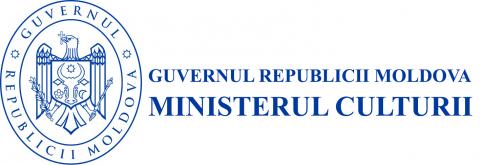INTRODUCTION
The National Inventory of Intangible Cultural Heritage (further, Inventory) is an obligatory list for official registration of the elements that constitute the Intangible Cultural Heritage (further, ICH) on the territory of the Republic of Moldova, with the purpose of safeguarding them. The elaboration and approval of the Inventory represents a way of adapting the national cultural policies to the UNESCO strategies and standards in the field of safeguarding the ICH. This inventory was constituted according to: article 12, paragraph 1 from the UNESCO Convention for the Safeguarding of the Intangible Cultural Heritage (Paris, 17 of October 2003), ratified by the Republic of Moldova by the Law nr. 12-XVI on 10.02.2006; provisions of the Law concerning safeguarding the intangible cultural heritage of the Republic of Moldova, approved on 02.12.2012; Order of the Ministry of Culture No. 238 from 09.12.2009. The Register constitutes a way of implementing the legal norms concerning safeguarding the ICH, promoted by the Law of Culture nr. 413-XIV from 27.05.1999, the Law on Museums Nr. 1596-XV from 27.12.2002, the Law on Popular Artistic Craftsmanship nr. 135-XV from 20.03.2003.
The Intangible Cultural Heritage covers the whole of traditional, oral, authentic creations transmitted from generation to generation, expressed in literary, musical, choreographic or theatrical forms, as well as the ensemble of practices, representations, expressions, knowledge and skills – as well as the instruments, objects, artifacts, specific clothing, accessories and cultural spaces associated therewith – that communities, groups and, in some cases, individuals recognize as part of their cultural heritage.
The ICH has, as its basic unit, elements of the heritage which are assigned to wide fields of traditional expressions. ICH elements are specific units perceived as cultural actions by the heritage holding community and researchers, having all morphological components which provide them with functionality, identity, but being also different from other elements of the same kind, specific for the traditional culture. Making an Inventory of the ICH consists in identifying, documenting, defining and amassing the constitutive elements, a fact that will stimulate the research, preservation, transmission, promoting, highlighting the elements of this heritage.
The Inventory was framed in two volumes. In the first volume, bearing the index “A”, are included those elements of the ICH which the Moldovans/Romanians of the Republic of Moldova identify themselves with. The next volume will have the index “B” and will comprise the elements of the ICH which other ethnicities from the Republic of Moldova identify themselves with.
In the elaboration of the Inventory were involved the members of the National Commission for Safeguarding the ICH, who are researchers and specialists in this field, having the generous support of a large group of researchers. At the beginning of the 2010 year, the Ministry of Culture traced and approved the concept, structure and methodology of the Inventory. The researchers prepared several surveys providing methodologically the frame of inventory of the ICH in communities. They were posted on the site www.patrimoniuimaterial.md, so that everyone willing to participate in the identification of the elements of heritage could access them. At the same time, started the fulfilment of the ICH in localities, with the participation of representatives of communities bearing heritage, of the public authorities, as legal representatives of communities, and representatives of several non-government organizations.
The inventory was accomplished according to the provisions of the UNESCO Convention on safeguarding the ICH and to the following directives in this filed, by studying the actual state of elements inside communities, in order to determine their level of viability. For the elements that had to be recorded, were completed heritage folders, according to a schedule-type which took into account: description (presentation) of the community, of groups, persons or institutions that bear the element; description of the actual state concerning the viability of the elements; date (day, month, year), specialist (name, function, institution s/he belongs to, scientific and/or didactical degree, according to each case); references to literature, discography, audio-visual elements, manuscripts preserved in the community, archive materials, different images. In the process of making an inventory were involved responsible persons from departments and district cultural sections, directors of cultural hostels, chiefs of artistic troupes, teachers and students from high-schools.
Information thus accumulated sketched more or less the diversity, representativeness, richness, level of viability, the extinct of some elements from the social practice and the identification of others, unknown in the special literature. At the same time a review was made of the scientific literature about each element of the ICH or about a group of elements functionally linked. It was noticed that certain aspects hold priority in the research, while others rest on the second plan. The existing archive sources were identified for these elements, the state of archives was taken into consideration and the existing problems in this field. Along with the inventor, the popularisation of the ICH took place.
The Inventory has 10 compartments, each one representing several elements of a certain cultural expression (literary, musical, choreographic etc.). The elements were structured in each compartment according to criteria that allowed encompassing the specific of this thesaurus. The scientific experience in each field was also taken into consideration, the special literature and the cultural realities in the communities bearing the ICH.
An important condition for including elements in the Inventory, besides the general and local name, the functionality and its actual promoters, is indicating their state of viability. With this aim were used different letter fonts. The viable elements are printed with normal font, like most of the adjoining texts; the elements in danger of extinction are printed in bold, in order that they may be easier visualized in the context of the others, while those that have disappeared from the communities’ practice and rest only in the spontaneous practice of the folkloric or other troupes, are printed in italic font. Being presented in such a way, the elements maintain their place in a functional context, an important aspect for respecting the syncretic character of the traditional culture. At the same time, in case an element changes its state of viability (for example, as a result of the actions undertaken by communities, some elements in danger of extinction, may regain their viability), at a new edition of the list, it can be written with other font.
In the Inventory are included several local characteristics of elements, so that communities, the local public administration, the cultural operators, representatives of civil society can monitor them more efficiently. Each compartment has its code and each element – a distinct number. Thus, carolling in male group has the inventory number A, II.12; II.2; V.4, which denotes that it appears in three compartments of the list. Painting the Easter eggs appears under number A.V.25-27; VII.40; VIII.79. Inside the compartments, according to the case, appear notes in brackets which refer to other compartments of the Inventory.
The Inventory is an open list which shall be completed, updated and permanently reviewed, thus stimulating the interest and responsibility of the communities bearing heritage, of the organizations and institutions that are responsible for its safeguarding. Possessing this list in the version we present here, it can be easier noticed what other elements miss or which ones aren’t enough presented. We count especially on the contribution of the communities bearing heritage which have the possibility to check once more their local heritage, to highlight it, appealing to the necessary consultations with older persons, with the leaders of opinion from the community. In the same way, the elements can be compared with those of neighbour communities, in order to observe the similarities and differences.
Following the model of the national Inventory of the ICH, we recommend to create regional (district) registers of the ICH, under the custody of the regional cultural sections or departments, also local registers of the ICH, for each locality separately, under the custody of the local public authorities.
The elements included in the National Inventory of the ICH acquire the status of state-protected elements and are assigned to a special regime that provides the protection, transmission and development of this heritage. Introducing in state evidence these elements is followed by actions that support the viability of the element, initiated and accomplished by the local communities bearing heritage, in cooperation with the institutions competent in this field, non-government organizations and other organisms interested in the preservation of the authenticity of the traditional creation.
It is very important to understand that including the elements of the ICH in the Inventory doesn’t simultaneously guarantee their protection. Taking these elements under state evidence is a way of increasing their visibility, to stimulate the interest of the society towards this heritage, to include in the social circuit the potential concentrated in the ICH. The elements of the ICH are viable as long as people make them circulate, consider them useful in the identity processes, of increasing social cohesion and revival of local economy.
Dr. Varvara BUZILĂ,
President of the National Commission
for Safeguarding the Intangible Cultural Heritage.

